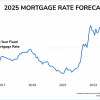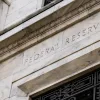
Mortgage Rates Today, December 12, 2025: Rates Falling. But for How Long?
Mortgage rates fell yesterday and on Wednesday. But don't bank on the mini-trend lasting.

Mortgage rates fell yesterday and on Wednesday. But don't bank on the mini-trend lasting.

Major agencies expect rates to hover around 6.2% in 2026. On-the-ground industry experts say this sideways rate movement will help balance the market.

With mortgage rates at 6.5%, expect a boom in refinances and home purchases.

3 million homeowners could benefit from refinancing if rates drop near 6.3%.

Two expert forecasts this week provide hope that mortgage rates could fall later this year and through 2026.

Requesting seller concessions to pay for a rate buydown can lead to greater monthly and lifetime savings than requesting a lower purchase price.

Nearly every major agency is predicting rates in the 6s or higher for 2025. But could rates drop into the 5s? There's a solid case for that argument.

Experts tell you to shop for mortgage rates. But it could put your homebuying at risk. How do you shop lenders when buying a house?

As expected, the Fed cut its key interest rate by 0.25%. But mortgage rates might rise due to new Fed guidance for 2025.

Trump told rally-goers in Arizona that mortgage rates would fall to 2% during his presidency. Is that anywhere near possible?

Trump will be the president for the next four years. What that could mean for mortgage rates.

Mortgage rates have been on a roller coaster of late. What might 2025 bring for rates?

The Fed issued an anticipated rate cut, but it was bigger than many expected. How mortgage rates are reacting.

Many homeowners who purchased since September 2022 might save money with a refinance, thanks to falling mortgage rates.